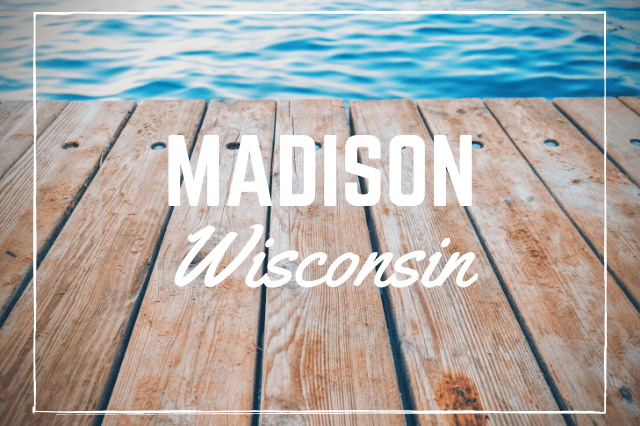Madison, Wisconsin


Water Quality in Madison, Wisconsin
Watershed: Lake Monona – Yahara River
What is the water quality like in Madison, WI?
Let’s dive deeper into what’s in Madison water.
What’s in Madison water?
Here are the top 5 chemical compounds in your water and what health issues they can potentially cause:
- Arsenic – Potential effect: Cancer
- Bromodichloromethane – Potential effect: Cancer
- Chloroform – Potential effect: Cancer
- Haloacetic acids – Potential effect: Cancer
- Hexavalent Chromium – Potential effect: Cancer
- Radium – Potential effect: Cancer
- Total trihalomethanes – Potential effect: Cancer
These are five of the 46 contaminants analyzed by the Environmental Working Group (ewg.org).
15 of these contaminants are rated as exceeding EWG Health Guidelines.
See the What Can You Do? section below for all of the contaminants you can filter out and how to do it.
Where does Madison’s water come from?
Madison’s water comes from the Lake Monona – Yahara River watershed.
34 of the 42 EPA assessed water sources in the Lake Monona – Yahara River watershed are in Impaired or Unknown condition. These include:
- Bernie’s Beach
- Brittingham Beach
- Esther Park Beach
- Hudson Park Beach
- Lake Monona
- Lake Waubesa
- Lake Wingra
- Nine Springs Creek
- Olbrich Park Beach
- Olin Park Beach
- Vilas Park beach
- Wingra Creek – one segment
Ideally, a water source would be rated in Good condition. These are in Good condition:
- B.B. Clarke Beach
- Upper Mud Lake
- Wingra Creek – one segment
- Yahara River – two segments
Whether a water source is in Impaired or Good condition refers to the quality of these uses:
- Drinking Water
- Aquatic Life
- Fish and Shellfish Consumption
- Recreation
Learn more from How’s My Waterway
See below for what you can do to improve Madison’s water.
Conclusion – What Can You Do?
Information about water quality can be surprising.
But there’s no reason to lose hope. There are things you can do in your household as well as things you can do at a community level.
In Your Household:
- Use Berkey filters with activated carbon to filter out 40 of the 46 contaminants in your drinking water.
- Berkey filters can also remove up to 99.99% of Lead in Madison water.
- Brita can filter 26 contaminants (and Lead depending on the filter).
- This does not include Arsenic, Radium, and Uranium.
- Note: We may receive a commission if you decide to purchase filters through links on this page.
- To filter out 42 of the 46 contaminants, consider a Reverse Osmosis water filtration system for your house.
- These are more expensive than pitchers to purchase, but can be more effective.
- They have the benefit of filtering out heavy hitters like:
- 1,4-Dioxane – “Exposure may cause damage to the central nervous system, liver and kidneys.”
- Aluminum
- Arsenic – health effects in water
- Atrazine – harm to the developing fetus
- Barium – In low doses, barium ions act as a muscle stimulant, and higher doses affect the nervous system, causing cardiac irregularities, tremors, weakness, anxiety, shortness of breath, and paralysis.
- Bromodichloromethane – health risks in drinking water
- Bromoform
- Cadmium – poisoning can lead to weak and brittle bones.
- Chloroform – side effects
- Chromium (total)
- Cobalt
- Cyanide
- Dibromoacetic acid
- Dibromochloromethane
- Dichloroacetic acid
- Fluoride
- Haloacetic acids – chlorination byproduct*
- Hexavalent chromium – health effects
- Metolachlor – herbicide
- Molybdenum
- Monobromoacetic acid
- Nitrate
- Nitrite
- PFBS – replacement for PFOS in 3M’s Scotchgard stain repellants
- PFHPA
- PFHXS
- PFOS – “persistent, toxic, and bioaccumulative.” Previously used in Scotchgard stain repellants.
- PFOA – used in carpeting, upholstery, apparel, floor wax, textiles, firefighting foam, and sealants. A “carcinogen, a liver toxicant, a developmental toxicant, and an immune system toxicant…also exerts hormonal effects including alteration of thyroid hormone levels.” See: Health concerns
- Radium
- Radon
- Selenium – toxicity
- Strontium
- Thallium
- Toluene
- Total trihalomethanes – byproduct of chlorination*
- Trichloroacetic acid
- Uranium
*Chlorination is an effective method of disinfecting/treating drinking water. You can then use a water filter to reduce the effects of chlorination byproducts to get the safest, cleanest water possible.
In Your Community:
Contact your local government officials and put pressure on them to invest in cleaner waterways and upgraded city water filtration and treatment.
Go to: https://cityofmadison.com/ to find contact information for your local officials.
